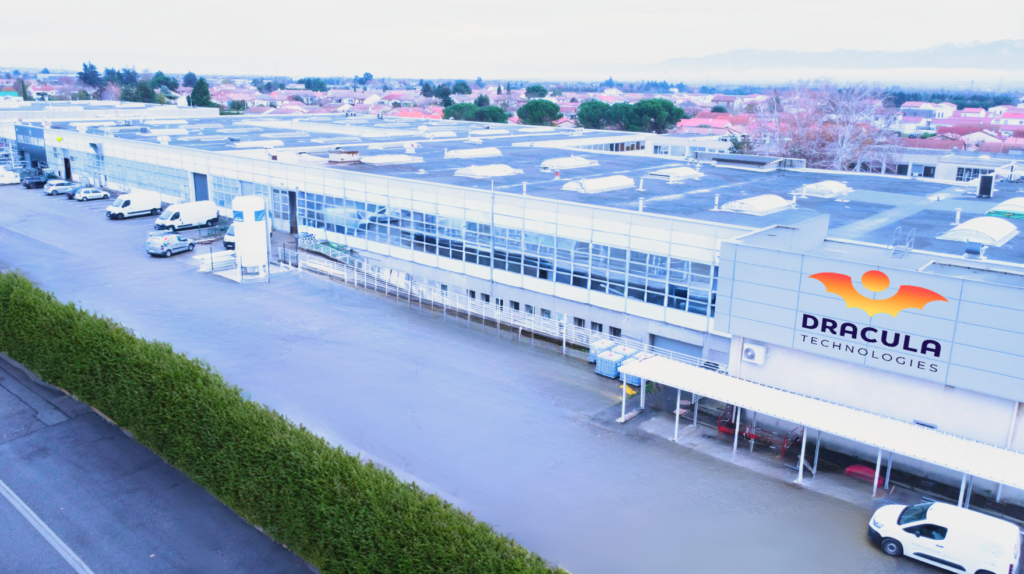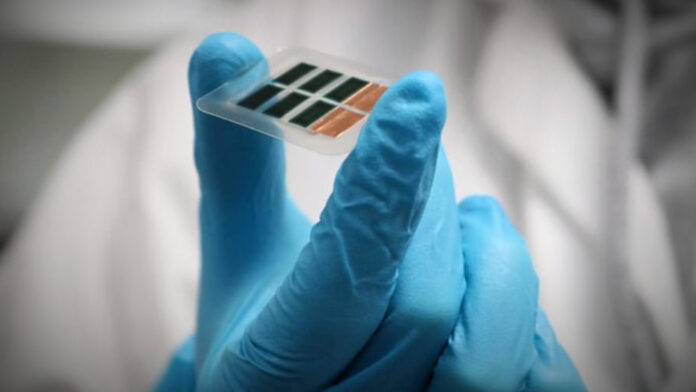France-based Dracula Technologies, developing low-light energy-harvesting technology for passive (battery-less) LoRaWAN-based IoT connectivity, has said its new production facility in Valence in southeastern France has passed an audit by US-based Semtech for quality, safety and sustainability, and is ready to roll. The firm said last October the factory, offering 2,500 metre-square of floor space with capacity to produce up to “150 million square centimetres” of organic photovoltaic (OPV) devices per year, will start “high-volume” production in “early 2024”.
It has the potential to achieve that volume “per year per shift”, it said this week. “This achievement marks a pivotal step in ramping up the company’s production capacity,” it said of the Semtech review. The California chip firm – which owns and licences the LoRa physical layer technology, which is the basis for the popular LoRaWAN protocol – is an investor in Dracula Technologies, since a €5.5 million funding round in 2022. Dracula Technologies has also received €5 million in funding from the French government, as part of its France 2030 reindustrialization strategy.

The new factory at the company’s home in Valence, dubbed the Green Micropower Factory, aligns with European regulations to phase out non-rechargeable batteries in IoT devices. It is the world’s largest factory dedicated exclusively to the production of OPV modules, its owner said. It is “fully automated” and “optimised”, and its operation marks “the beginning of the end for conventional batteries”, it said. Dracula Technologies has started to recruit over 60 additional staff to the site. It will have 250 employees by 2030, it said.
OPV technology draws power in murky conditions, such as in warehouses or factories, where the luminous flux per unit area (lux), which measures illuminance, goes as low as 500. Outdoor light registers at closer to 10,000 lux; the firm’s LAYER-branded OPV modules, presented for marketing purposes as a bat-shaped photovoltaic printout, work at 200 lux, and even down to 100 lux. They use LoRaWAN; it has a prototype OPV tracker, doing the rounds for about a year, that uses a reference module from Semtech and a cloud stack from The Things Industries (TTI).
It also has a new multi-band Lora module developed with Semetch, Murata, and e-peas. In April, it announced compatibility with the latest STM32U0 line of ultra-low power microcontrollers (MCUs) from STMicroelectronics, geared for low-power industrial IoT applications, which offers “up-to 50 percent” reduction in energy consumption versus “previous MCUs”, it said. The LAYER OPV product can be printed in any size, depending on the required power output, onto an 0.3mm adhesive sticker on a regular inkjet printer using special OPV ink.
The new factory will handle this process, in response to “rising demand”, it said. The company has a new electrical energy storage solution, called LAYERVault, to retain OPV power on a single flexible film and combined in a two-in-one solution with its LAYER OPV harvesting technology. LAYERVault was presented at CES in Las Vegas in January as a “first-of-its-kind”, which integrates electrical storage with OPV energy harvesting. It is a “significant milestone” for the IoT community, the company proclaimed.
Brice Cruchon, chief executive at Dracula Technologies, said: “Semtech has among the highest quality, safety, and environmental standards in its industry. Its confirmation is of great significance for Dracula Technologies’ new manufacturing site and will enable us to meaningfully ramp up production to meet our customers’ needs over the coming years. This achievement marks a crucial advancement in scaling up production capacity to address the increasing need for our OPV modules.”
Olivier Seller, technical fellow for wireless IP at Semtech, commented: “We are excited about the potential of this facility to advance energy-efficient IoT applications. This qualification affirms not only the robustness of Dracula Technologies’ manufacturing processes but also their commitment to sustainability and innovation. Through production of OPV modules at scale, we can jointly accelerate deployment of self-powered devices. Reduced reliance on traditional batteries paves the way for a more sustainable future.”

